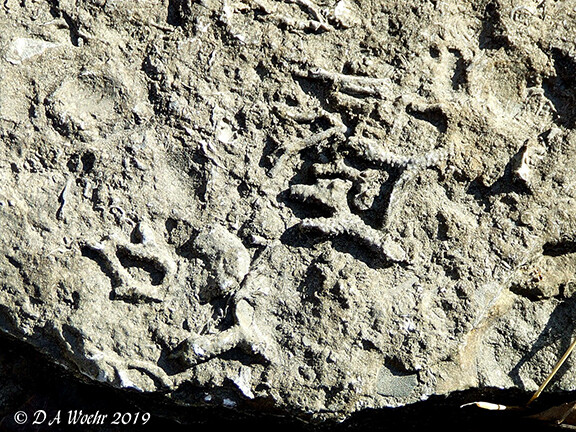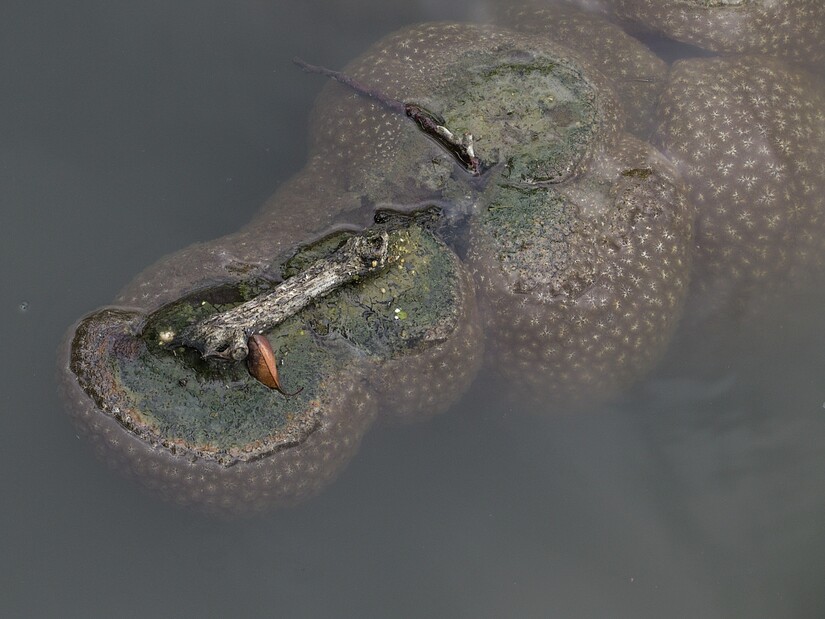Image


DEERFIELD TWP., WARREN COUNTY, OH -- I thought that at my advanced age I didn’t have much else to learn about nature here in southwest Ohio. But, a recent bit of enlightenment has changed my mind. Fifteen years ago my Ohio Certified Volunteer Naturalist training rekindled my interest in geology – especially the geology we see every day here in Warren County. Much of our local geological record is found the fossilized remains of plants and animals that lived in the 450-million year old Ordovician Sea. Today the bed of that ancient sea is exposed at the surface of the earth throughout our area especially around road cuts, spillways, and hillside construction sights. One of the common fossils encountered in these exposures are the bryozoa. Many fossilized bryozoans look like small coral-like plant stems covered with somewhat evenly-spaced pock marks or pores.

Within each pore lived a very small colonial marine organism.
Being fossilized for 450 million years I naively thought that bryozoans were extinct. But, I thought wrong! Not all of them are. There are still living species of bryozoans practically at our doorstep. I've been observing this ugly mass (see attached photo) under the bridge over the pond in Landen Deerfield Park for several years. I used to think it was some sort of algae or seaweed. But I recently did a little web browsing and now think it is Magnificent Bryozoan. I haven't heard anyone ever talk about it around here; however two of my trusted naturalist friends have just confirmed my identification, Magnificent Bryozoan, as correct. One friend had seen it in Georgia but not locally. The other had not personally seen it locally but recalled pictures that local residents had sent her of the subject that they photographed in Landen Lake. It seems that these organisms can be transported from one body of water to another on the feet of ducks, geese, herons, etc. They’re hitchhikers. And they’re spreading.

Well I’ll be a monkey’s uncle! Not all bryozoans are fossilized and extinct after all.
Want to learn more, watch the YouTube below that was done by Shawnee Community College...